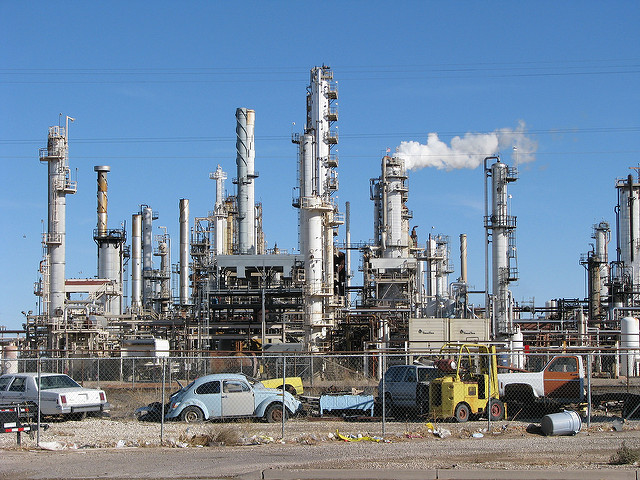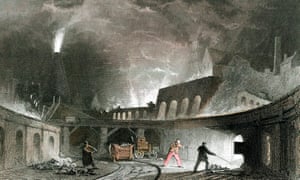http://e-info.org.tw/node/118106
「人造」暖化效應何時開始? 研究:影響地球超過180年
文字大小
33 1 Share1
本報2016年9月5日綜合外電報導,姜唯編譯;蔡麗伶審校
發表於《自然》期刊的研究發現,人為暖化開始時間比過去所知的時間來得早。早在180年前,北半球大陸和海洋就因為工業時代的化石燃料排放,導致溫室氣體增加而開始暖化,將人為氣候變遷的起始時間再往前推至19世紀中葉。
北半球大陸和海洋,早在180年前就因為工業時代的化石燃料排放,導致溫室氣體增加而開始暖化。圖片來源:emdot (CC BY-NC-ND 2.0)
樹年輪、珊瑚、冰核 記錄地球歷年「體溫」
澳洲科學家觀察長達500年的樹木年輪、珊瑚和冰核等自然界中的歷史溫度資料,發現人為暖化開始時間比過去所知要早。溫室氣體增加導致的暖化現象,最早於1830年出現在熱帶海洋和北極,也就是說今日所見的暖化現象,早在180年前就開始。
目前大部分地球氣候史資料來自1880年以後發明的溫度監控技術。這些技術雖然能掌握20世紀的環境變化,卻無法知道人為暖化的起點。
科學家:減緩排碳 逆轉氣候系統仍有機會
科學家從自然界的歷史溫度資料發現,熱帶海洋和北半球陸地上的空氣溫度從1830年代起升高至高於自然變化的水準,這和溫室氣體排放量開始增加的時間吻合。
研究人員原以為,這是火山爆發後,大氣中火山灰造成自然冷卻後的溫度反彈。但是氣候模擬顯示,觀察到的暖化現象可單純歸因於溫室氣體排放增加。這樣的研究結果,有助精準描繪出受人類活動影響之前的地球溫度基準線。
澳大拉西亞、南美等南半球地區則在50年後的19世紀末開始暖化。南極沒有觀察到大陸規模的暖化現象,可能是因為洋流把暖水帶往北邊。
而工業化在1800年代尚未造成大量的溫室氣體排放,但讓科學家震驚的是,氣候變遷在如此短的時間內快速發生。不過研究者指出這可能是個機會,如果人類可以減緩溫室氣體排放,甚至主動儲存捕捉溫室氣體,也許可以快速逆轉氣候系統。
Human-induced climate change began earlier than previously thought
Signs of warming appear as early as 1830 say researchers, whose analysis will help build accurate baseline of temperature before influence of human activity
Continents and oceans in the northern hemisphere began to warm with industrial-era fossil fuel emissions nearly 200 years ago, pushing back the origins of human-induced climate change to the mid-19th century.
The first signs of warming from the rise in greenhouse gases which came hand-in-hand with the Industrial Revolution appear as early as 1830 in the tropical oceans and the Arctic, meaning that climate change witnessed today began about 180 years ago.
Researchers in Australia found evidence for the early onset of warming after trawling through 500 years of data on tree rings, corals and ice cores that together form a natural archive of Earth’s historical temperatures.
Much of what is known about Earth’s climate history is based on instruments that have monitored temperatures from the 1880s onwards. But while these capture the changing conditions seen in the 20th century, they miss the start of the warming trend.
“A lot is known about the climate record for the time when we have instrumental records,” said Nerilie Abram, a climate scientist at the Australian National University. “We wanted to look at whether these records give us the full picture.”
Pooling the data, the scientists found that temperatures in the tropical oceans and in the air above northern hemisphere land-masses began to rise above natural variations in the 1830s, just as greenhouse gas emissions edged upwards.
The scientists first thought that they were seeing the climate rebound after a period of natural cooling brought on by particles thrown high into the atmosphere from volcanic eruptions. But climate simulations showed that the warming they observed could be explained purely by the small rise in greenhouse gas emissions.
“The changes in greenhouse gases in the 19th century were small compared with the fairly rapid changes we see now, so seeing the climate respond this way was a surprise,” said Abrams.
The southern hemisphere, including Australasia and South America, appeared to start heating up 50 years later, near the turn of the century, while no sign of warming on the continental scale was noticed in Antarctica. The lack of appreciable warming in Antarctica may be down to ocean currents carrying warm waters to the north and away from the frigid continent.
The results are important to build up an accurate baseline of the Earth’s temperature before human activity began to wield an influence on the climate. Details of the study, which involved 25 scientists across Australia, the US, Europe and Asia, are published in the journal Nature.
Industrialisation led to only minor rises in greenhouse gases in the 1800s, but what struck the scientists was how swiftly the climate changed as a result. “There is a potential that this could have a flip side,” Abram said. “If we can do anything to slow down greenhouse gas emissions, or even start to draw them back, there may be at least some areas of the climate system where we get a rapid payback.”
Ed Hawkins, a meteorologist at Reading University, said the results show how tree rings, corals and other natural material can be used to understand the regional and global changes that unfolded during and since the pre-industrial period. “This is further evidence that the climate has already changed significantly since the pre-industrial period,” he said.



沒有留言:
張貼留言